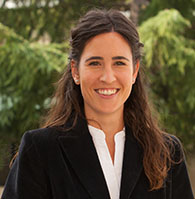Maria Begona Errasti-Ibarrondo

Begoña Errasti-Ibarrondo, PhD, is a Associate Professor in the Faculty of Nursing, Universidad de Navarra, Spain. She specialized in intensive care nursing in Clinica Universidad de Navarra, where she worked from 2007 to 2013. She earned a Master's Degree in Advanced Nursing Practice and Research in 2011 and a Doctoral Degree in Nursing in 2015, both from the Universidad de Navarra. She has been a Visiting Academic to the Faculty of Nursing and the John Dossetor Health Ethics Centre, University of Alberta in 2018, 2019 and 2022.
Her research is focused on the nurse-patient relationship at the end-of-life; the education of nursing students and generalist nurses for providing person-centered care to people living with advanced or terminal illnesses; and phenomena that are central to health care employing a phenomenological method. Her teaching practice is in pathophysiology, the nurse-patient relationship at the end-of-life and qualitative research.
Selected Publications
Errasti-Ibarrondo, B., Choperena, A., & Wilson, D. (2023). Reading and reflecting on experiential accounts of hospital patients to foster a person-centered care approach: A novel educational method. Teaching and Learning in Nursing, 18(1), 166-175. https://doi.org/10.1016/j.teln.2022.05.012
Errasti-Ibarrondo, B., Jordán, J. A., Pérez, María de las Mercedes, & Arantzamendi, M. (2019). van Manen's phenomenology of practice: How can it contribute to nursing? Nursing Inquiry, 26(1), e12259. doi: 10.1111/nin.12259
Errasti-Ibarrondo, B., Jordán, J. A., Pérez, María de las Mercedes, & Arantzamendi, M. (2018). Conducting phenomenological research: rationalizing the methods and rigour of the phenomenology of practice. Journal of Advanced Nursing, 74(7), 1723-1734. doi: 10.1111/jan.13569
Errasti-Ibarrondo, B., Pérez, M., Carrasco, J. M., Lama, M., Zaragoza-Salcedo, A., & Arantzamendi, M. (2015). Essential elements of the relationship between the nurse and the person with advanced and terminal cancer: a meta-ethnography. Nursing outlook, 63(3), 255-268. doi:10.1016/j.outlook.2014.12.001